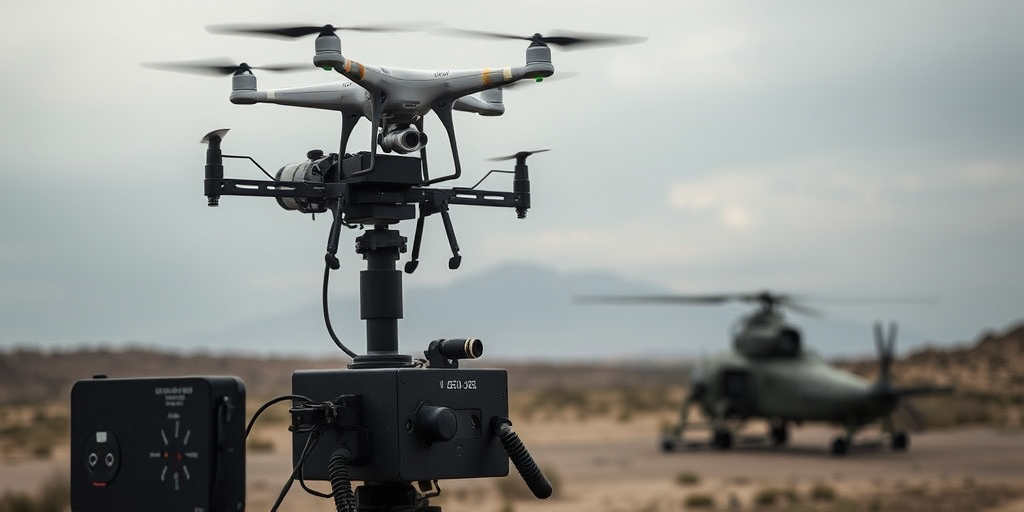Are you prepared for an invisible invasion from above? As modern drone technology surges ahead, traditional countermeasures prove both overly expensive and ineffective. Today’s anti-drone tech offers a crucial, precise solution to secure airspace by employing advanced detection systems and non-kinetic responses. Its benefits include: • Cost-effectiveness • Reduced collateral damage • Enhanced operational safety • Scalable system integration By integrating these innovations, defense systems now deliver a strategic shield against evolving aerial threats while redefining modern security.
Advanced Drone Detection Systems in Anti-Drone Tech

Modern detection systems in anti-drone technology integrate RF analysers, optical sensors, and acoustic sensors, creating a robust hostile flight detection system that enables rapid threat identification. By leveraging radar tracking algorithms and innovative sensor fusion methods, these systems continuously monitor the skies for unauthorized aerial activity. Digital interference platforms and smart sensor deployment further enhance the precision of detection, reducing false alarms and ensuring immediate recognition of drone incursions.
The combination of multi-spectrum sensor arrays with advanced data processing algorithms allows operators to effectively mitigate threats. Early identification is paramount, as it provides the necessary window to engage countermeasures before drones can execute their mission. Continuous scanning, rapid data fusion, and real-time alerts are the pillars supporting this proactive defense strategy.
- Continuous scanning using multi-spectrum sensors
- Rapid data fusion and anomaly identification
- Real-time alert generation for immediate response
This systematic approach ensures that detection systems maintain constant vigilance. By processing data from diverse sensor modalities, these systems not only recognize standard flight patterns but also discern subtle abnormalities that indicate potential hostile activity. The technological synergy of radar tracking with sophisticated sensor networks creates a real-time alert platform essential for modern defense operations, ensuring that emerging drone threats are met with the precision required in a dynamic aerial combat environment.
Integration Strategies: Building Unified Anti-Drone Defense Systems

Modern counter-drone strategies now hinge on integrating various detection and countermeasure technologies into one cohesive defense framework. Unified systems merge radar tracking, RF countermeasures, and optical surveillance into a centralized command center that streamlines data fusion from a multitude of sensors. This integration allows for proactive risk assessments and ensures that integrated threat response is both rapid and precise during drone incursions.
By combining diverse sensor outputs, operators achieve real-time situational awareness that is essential for effective infrastructure protection systems. Integrated kits deployed on tactical vehicles, fixed installations, and portable field units further bolster coordinated responses in dynamic environments. Centralized command centers act as the nerve center, managing both detection signals and automated defense responses across multiple layers of the defense network.
| Integration Component | Function |
|---|---|
| Radar Tracking | Early detection and identification |
| RF Jamming Module | Neutralize electronic signals |
| Optical Sensors | Visual confirmation and tracking |
| Command Center | Centralized control and data fusion |
This unified approach enhances operational coordination and minimizes response times. The integration of multiple systems not only elevates overall security but also ensures that deployed counter-drone tech can adapt seamlessly to emerging aerial threats in modern warfare.
Final Words
in the action, this article examined cutting-edge aerial defense systems, advanced detection capabilities, non-kinetic countermeasures, and seamless integration strategies.
Key benefits highlighted include cost-effectiveness, reduced collateral damage, enhanced operational safety, and scalable system integration.
We explored how modern systems and AI innovations shape proactive, unified defenses against evolving threats.
These insights reinforce the significance of Anti-Drone Tech: Modern Defense Against Eyes Above, inspiring continuous innovation and robust strategies in safeguarding airspace.
FAQ
Q: What is the most effective defense against drones?
A: The most effective defense combines multiple layers including radar detection, RF jammers, and optical sensors. Modern systems utilize both detection and countermeasure technologies to identify and neutralize drone threats.
Q: How do drone blocking devices work?
A: Anti-drone devices primarily use radio frequency jammers and GPS spoofers to disrupt drone controls. These systems operate by interfering with communication signals between the drone and its operator.
Q: What detection methods do anti-drone systems use?
A: Anti-drone systems employ RF analyzers, optical sensors, and acoustic detectors for comprehensive threat monitoring. These technologies work together to provide real-time identification of unauthorized aerial activity.
Q: What range do anti-drone systems cover?
A: Advanced anti-drone systems like Leonidas can operate effectively up to 3.1 miles using high-power microwave technology. Coverage varies based on system type and environmental conditions.
Q: How are modern anti-drone systems integrated?
A: Modern systems integrate multiple components through unified command centers. They combine radar tracking, RF countermeasures, and optical surveillance to create comprehensive defense networks with automated responses.
Q: What innovations are emerging in anti-drone technology?
A: Emerging anti-drone technologies include AI-powered detection, machine learning algorithms, and autonomous sensor integration. These advances focus on improving threat assessment and reducing response times.

